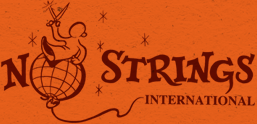Madagascar, Cyclone: Trainers Workshop in Pictures
No Strings was asked by CRS (Catholic Relief Service) to conduct two trainings in Madagascar to support wide-reaching rollout of our Cyclone and Flood / Landslide films which we’d dubbed into Malagasy ready for use there. Locations: Toamasina in the East, and Tolaria in the South West, regions where families, their crops, food stocks and homes are extremely vulnerable.
The project has been ongoing for almost a year now, reaching both adults and children, and we’re about to make a return visit to see what’s working best.
Here, a glimpse of the workshops in pictures.

Our two films present all the key messages participants will focus on with the communities they serve

Participants create a village map marking emergency evacuation routes, and discuss how best to include different voices in communities they work in during planning meetings. Links to one of the Cyclone film’s main key messages

Additional key messages from the films are identified, drawn, and then ranked in terms of importance. This one: after a flood, boil water before you drink it

And a group rehearses a puppet sketch showing what can go wrong if you don’t boil that water! An activity they’ll facilitate with children / communities to give them space to explore and localise this and other vital messages

A fabulous zebu (local cattle) puppet – one of many made by participants from water bottles, tape, newspaper and other readily-available materials

Off for a school visit in Toamasina where participants will practice a number of activitiy techniques learnt so far

Cyclones are terrifying events but that doesn’t stop these 14-year-olds enjoying our film. We guess that’s puppets for you. They’ll now split up into several different classes to work with groups of our participants to explore its messages more deeply through child-led activities

Have they learnt anything? Puppet Soluf – who missed most of the film because he was chatting – asks for their help, and breaks the ice

Small group work: Making a model village to plot risks and vulnerabilitites in the local community, then discuss

A finished model at the end of the visit. Soluf is all ears as children express what they’ve learnt together

And an example participants made in the training – of Desa Wanabalu, the imaginary village where the film is based. This kind of work can be done outside using sand, leaves, twigs, stones and bits and pieces of trash. It’s useful for adults to highlight risk, and children can add figures and bring it to life as in the old toy theatre puppet tradition

Time for a relaxing moment at the end of a busy morning. This character is way too laid back to bother listening to radio weather reports during cyclone season, as we find out later in our Showtime finale



